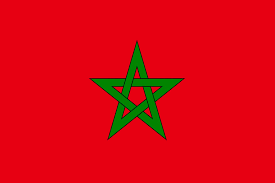Language/Moroccan-arabic/Grammar/Adjectives
In today's lesson, we will be discussing the grammar of adjectives in Moroccan Arabic. We will look at how adjectives are used to describe nouns and how they are formed. We will also look at some examples of adjectives in Moroccan Arabic. By the end of this lesson, you should have a better understanding of how adjectives work in Moroccan Arabic.
Adjective Formation
Adjectives in Moroccan Arabic are formed by adding the suffixes -i or -iyy to the noun. For example, the word for 'beautiful' is 'jamil' and the word for 'house' is 'bayt'. To form the adjective 'beautiful house', we add the suffix -i to the noun 'bayt' to get 'bayti'.
Examples
Here are some examples of adjectives in Moroccan Arabic:
- 'kabir' (big) + 'bayt' (house) = 'bayti kabiri' (big house)
- 'sarih' (clear) + 'mizan' (scale) = 'mizani sarihi' (clear scale)
- 'qalil' (small) + 'dahab' (gold) = 'dahabi qalili' (small gold)
Adjective Placement
Adjectives in Moroccan Arabic usually come after the noun they are describing. For example, the phrase 'beautiful house' would be 'bayti jamili' in Moroccan Arabic. However, there are some exceptions to this rule. For example, when describing a person, the adjective usually comes before the noun. For example, the phrase 'beautiful girl' would be 'binti jamila' in Moroccan Arabic.
Please feel free to edit this wiki page if you think it can be improved. 😎
Related Lessons
- Present Tense
- Ordinal Numbers in Moroccan Arabic
- The verb "to Get up"
- The verb "To Drink"
- The Verb "To Talk"
- The Dative Case in Moroccan Arabic
- The verb "to sleep"
- Present Continuous in Moroccan Arabic
- The verb "To want"
- Nouns

